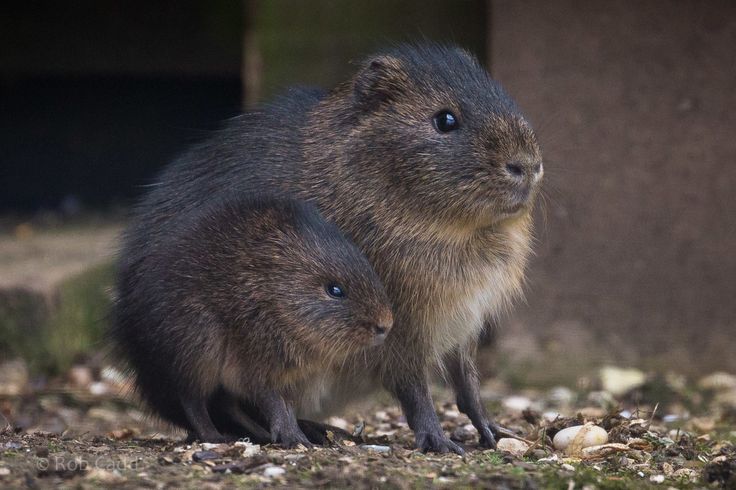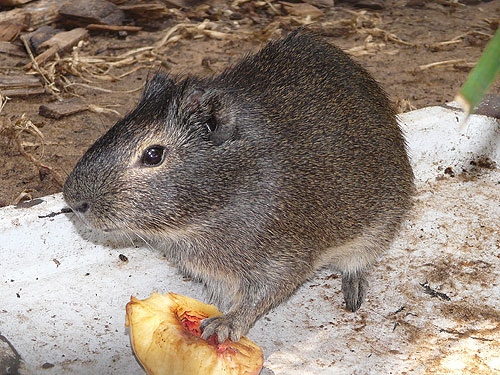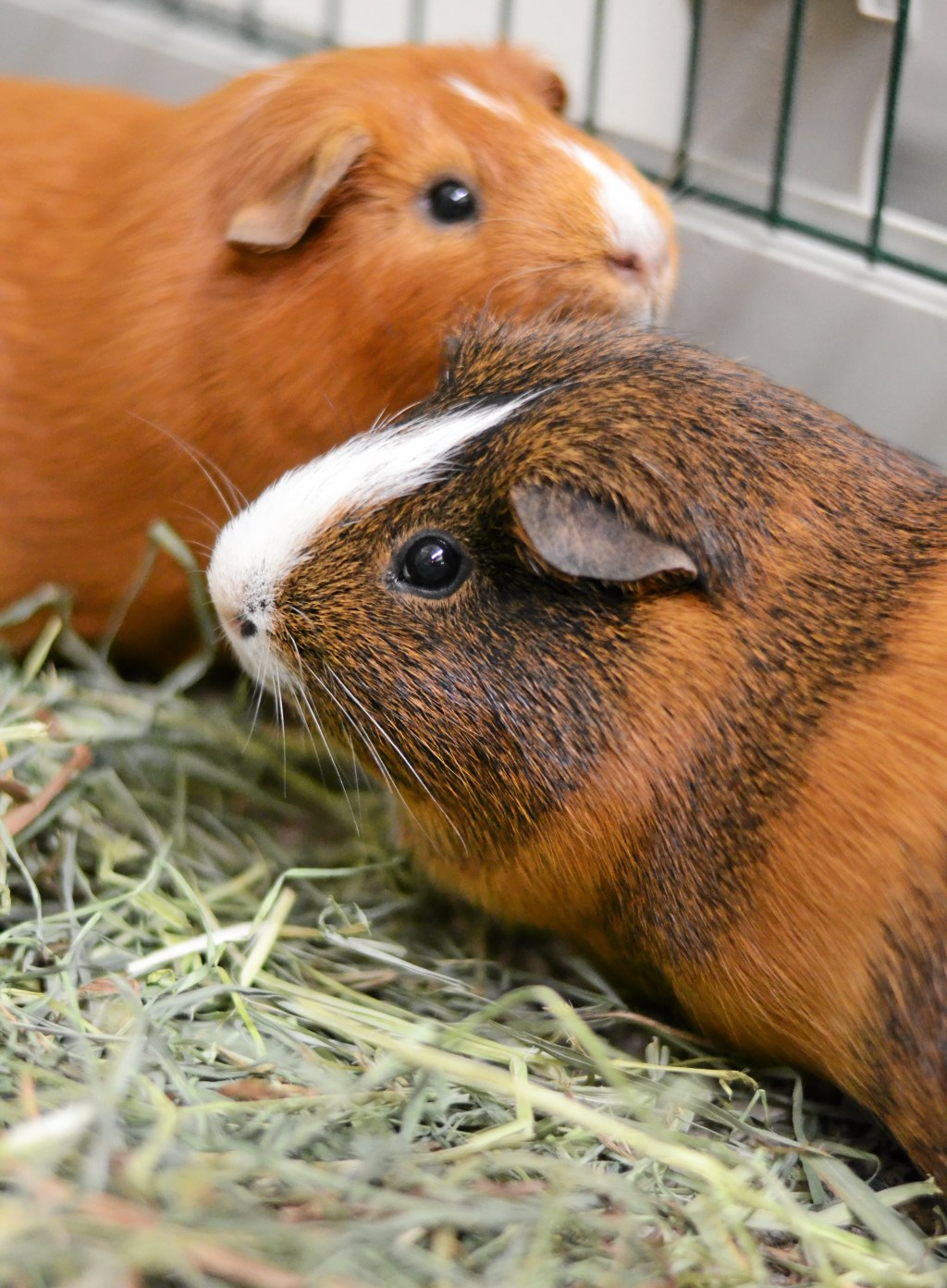Guinea pigs, known as cavies, are well-loved pets found in homes across the globe. These small, sociable rodents have been domesticated for thousands of years and are cherished for their friendly nature and adorable looks. Beyond their role as cherished pets, guinea pigs have a rich history rooted in their wild origins. This article will delve into the wild life of guinea pigs, examining their habitat, lifestyle, social behavior, diet, and survival tactics.
Contents
- 1 The Wild Beginnings of Guinea Pigs: From the Andes to Domestication
- 2 Habitat and Lifestyle: The Natural Environment of Guinea Pigs
- 3 Social Structure and Behavior: The Social Dynamics of Wild Guinea Pigs
- 4 Diet and Nutrition: What Wild Guinea Pigs Eat
- 5 Predators and Survival: The Dangers Guinea Pigs Face in the Wild
- 6 The Conservation Status of Wild Guinea Pigs: Challenges and Opportunities
- 7 Conclusion
The Wild Beginnings of Guinea Pigs: From the Andes to Domestication

The domestic guinea pig, scientifically termed Cavia porcellus, originally comes from the high Andes regions in South America. They were first domesticated in regions like Peru, Bolivia, Colombia, and Ecuador, where they were a staple food source for ancient civilizations, including the Inca. Evidence suggests guinea pigs were domesticated even earlier than other livestock, with estimates going back 5,000 years.
The indigenous peoples of the Andes viewed guinea pigs not only as a food source but also held them in high cultural and spiritual regard. They played roles in religious ceremonies and were used as currency. Some were even kept as pets, highlighting the special place they held in Andean society.
When Spanish conquistadors arrived, they were struck by the reverence the native people had for guinea pigs. Notably, during the 16th-century conquest of the Inca Empire, Spanish soldiers were amazed to find that the Inca ruler, Atahualpa, kept guinea pigs in a golden cage, cared for by attendants. This illustrates the significant role guinea pigs played in Andean culture.
Habitat and Lifestyle: The Natural Environment of Guinea Pigs

The wild relative of the domestic guinea pig is the montane guinea pig, Cavia aperea. Unlike their domestic cousins, these wild guinea pigs are rarely kept as pets. They are more robust, have shorter fur, and possess a wary demeanor that suits their rugged Andean habitat.
Wild guinea pigs typically inhabit areas near water sources like rivers and streams, which provide them with food and shelter. They prefer regions with dense vegetation and rocky terrains to hide from predators. These rodents are social creatures, living in groups called herds, which include one dominant male, several females, and their offspring. A hierarchy within the herd is established based on age, size, and gender.
Social Structure and Behavior: The Social Dynamics of Wild Guinea Pigs
Wild guinea pigs live in herds, where a clear social hierarchy is maintained. The dominant male, or alpha male, holds the highest rank and manages access to resources such as food, shelter, and mates. He also defends the herd against predators.
Female guinea pigs care for the young and maintain the burrows. They also groom and care for each other. Young males typically leave the herd upon reaching maturity, while females usually remain with the group for their entire lives, aiding in raising future generations.
Wild guinea pigs use various sounds for communication: high-pitched whistles for happiness or excitement, and low-pitched rumbles for aggression or dominance. They also communicate through scent marking and body language, like arching their backs to signal submission or stretching to show dominance.
Diet and Nutrition: What Wild Guinea Pigs Eat

Guinea pigs are herbivores, mainly consuming plants. Their diet includes a variety of grasses, herbs, leaves, and flowers, with fruits and vegetables when available. Wild guinea pigs have evolved the ability to synthesize vitamin C in their bodies, unlike many other animals, because their natural diet is rich in this nutrient, essential for their growth and health.
In addition to grazing, they have specialized teeth for grinding down tough vegetation and cracking open seeds and nuts, adaptations that help them thrive in their natural habitats where food can be scarce and competition high.
Predators and Survival: The Dangers Guinea Pigs Face in the Wild
Wild guinea pigs face numerous predators, including birds of prey like hawks and eagles, larger mammals such as foxes and cats, and snakes. They’ve evolved to be fast runners with strong hind legs to escape danger quickly, and they possess excellent peripheral vision to detect threats early.
Guinea pigs rely on their agility, speed, and ability to hide in burrows or dense vegetation to survive. Their social structure allows them to alert each other to potential dangers and defend themselves as a group.
The Conservation Status of Wild Guinea Pigs: Challenges and Opportunities
Despite their popularity as pets, wild guinea pigs face survival threats from habitat destruction due to deforestation and agricultural expansion. Illegal capture for the pet trade and hunting also contribute to their decline.
There are ongoing efforts to protect and conserve wild guinea pigs, particularly in their native Andean habitats. Organizations like the Global Wildlife Conservation’s Andean Cat Alliance are working to protect these habitats and educate communities about conservation. There are also initiatives to discourage hunting and regulate the illegal pet trade.
Conclusion
While domestic guinea pigs enjoy comfortable lives as pets, their wild counterparts lead challenging but fascinating lives. From the Andes Mountains to our homes, these small rodents have a rich history of coexistence with humans. Understanding and appreciating their natural behavior and needs, both in the wild and in captivity, is crucial for their well-being and conservation for future generations.
